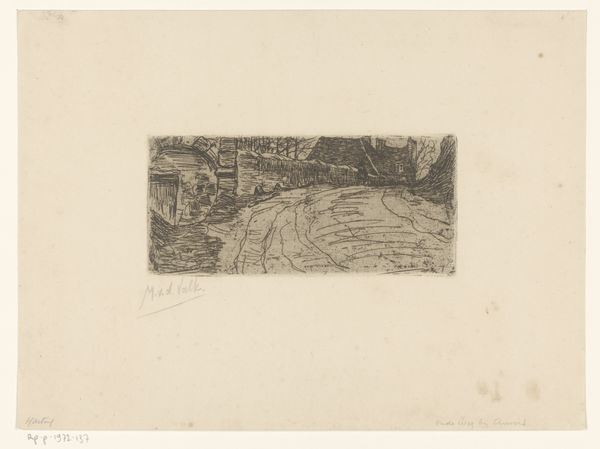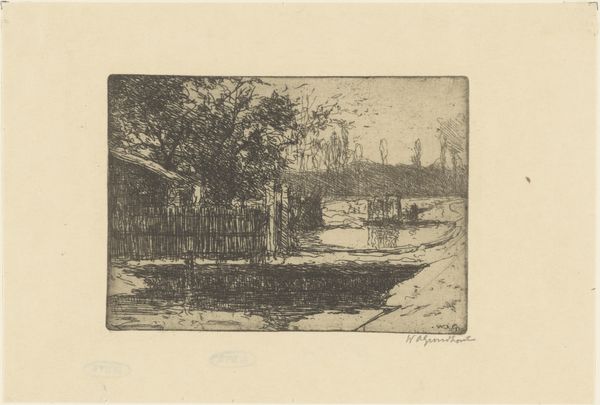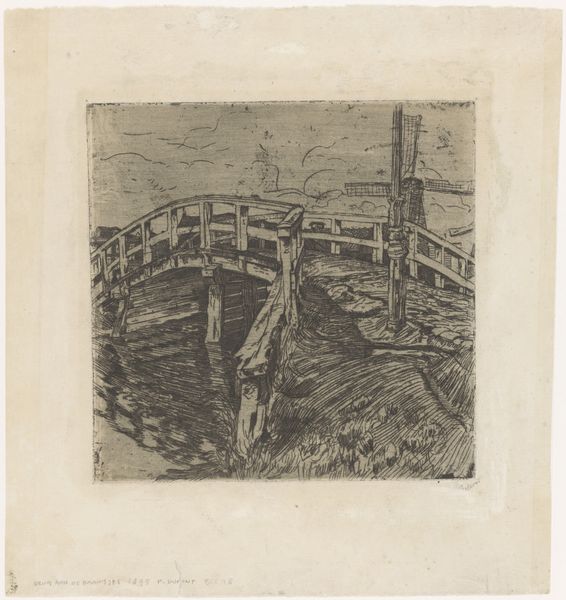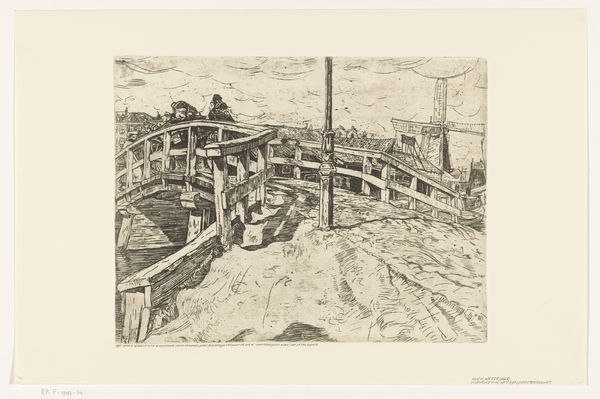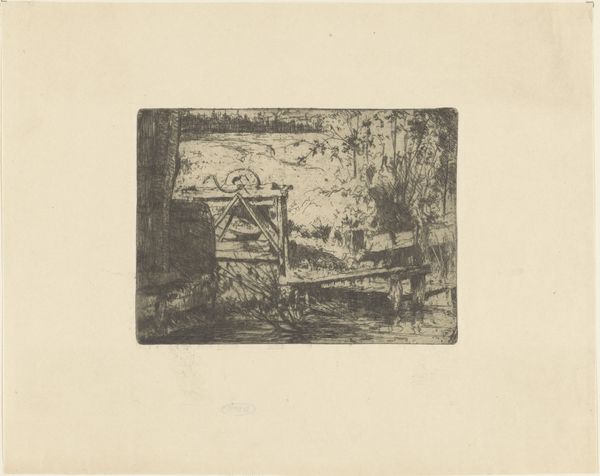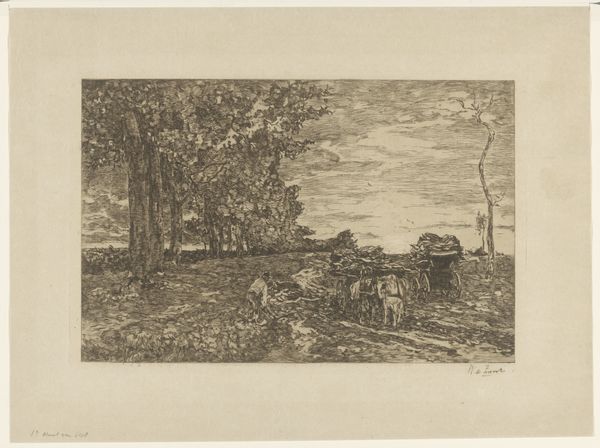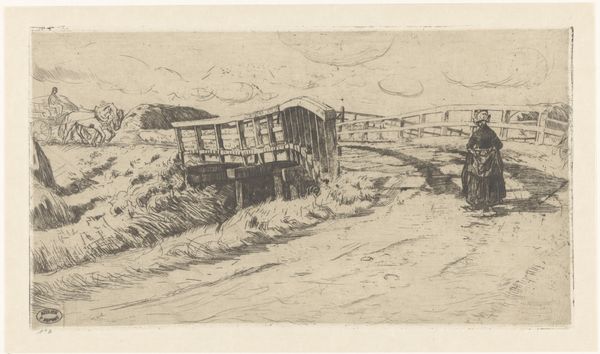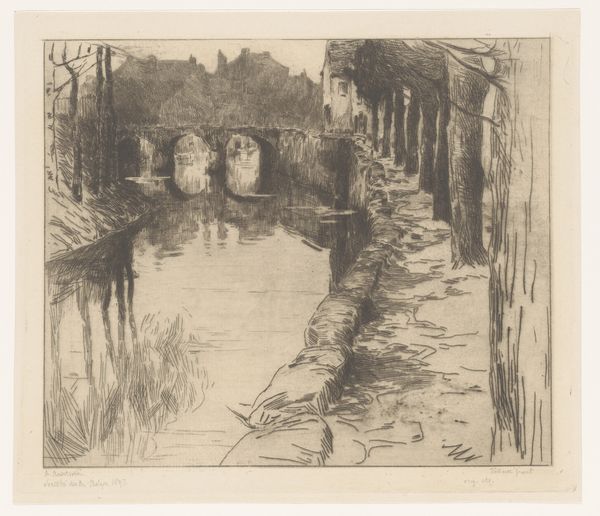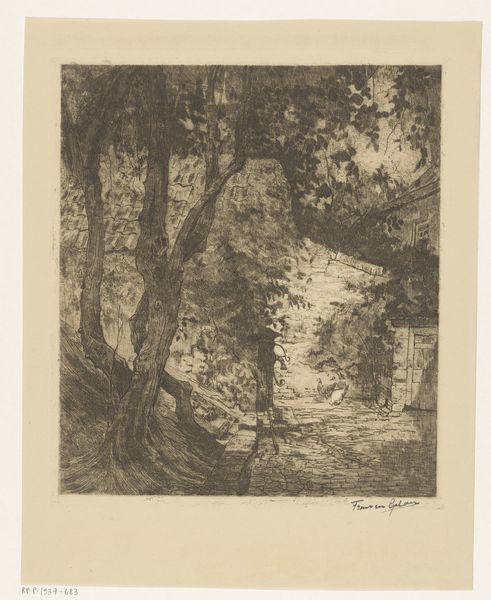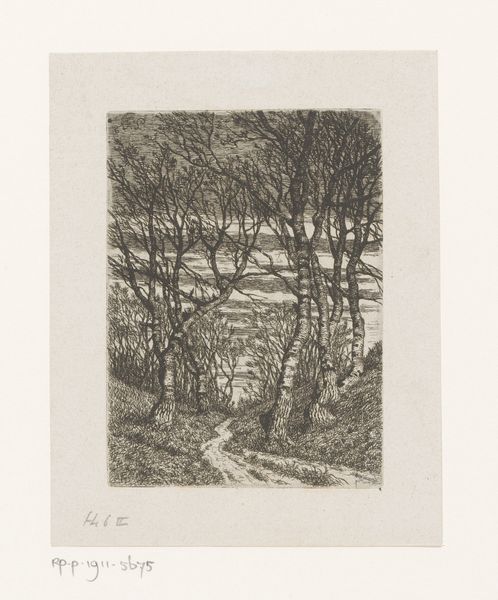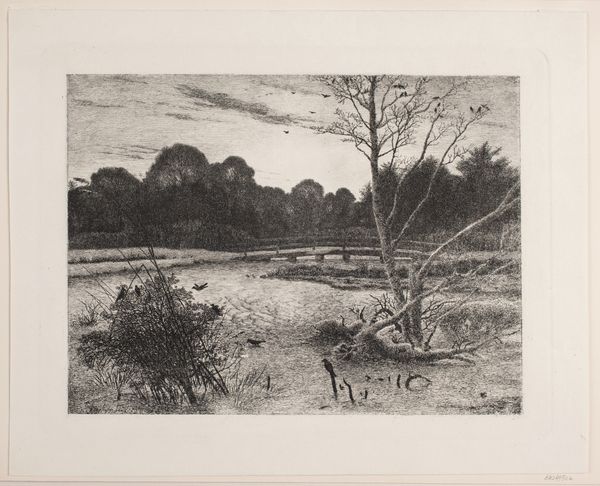
print, etching
#
dutch-golden-age
# print
#
etching
#
old engraving style
#
landscape
#
cityscape
#
realism
Dimensions: height 160 mm, width 183 mm
Copyright: Rijks Museum: Open Domain
Curator: Here we have Pieter Dupont’s etching from 1895, titled "Brug in de Baarsjes in Amsterdam," depicting a bridge in the Baarsjes neighborhood of Amsterdam. Editor: It strikes me as very stark. The shadows are so pronounced, almost aggressive, casting long dark bars across the bridge. It creates an almost ominous feeling. Curator: Consider how this print would have been made, etched into a metal plate, likely copper, through labor intensive process, acid biting away at the exposed lines. Prints like this were part of the explosion of visual culture, a democratizing force that reproduced imagery at scales never before seen. They bring visibility. Editor: Absolutely. It allows us to access this specific locale, the Baarsjes, in Amsterdam, at the close of the 19th century. Knowing the expansion of Amsterdam at this time, we see this industrial transformation etched, literally, into the landscape. Notice the detail in the buildings, hinting at an emerging urbanity. Curator: Precisely! Dupont wasn't just recording; he was engaged in production, distribution, a system where the consumption of images mirrors industrial output. We tend to gloss over that by focusing on the ‘artist’ as an isolated genius, but really, he was a participant in, and product of, a burgeoning visual economy. Editor: And this neighborhood wasn’t just some accidental selection. The Baarsjes, from its inception, was created through social engineering of public works programs. We are invited to reflect how societal growth rests on often overlooked infrastructure. The image then is not just of the Baarsjes; it’s about who has the privilege to access, live, and move freely through the space. Curator: Exactly, the materials, their sources, and their production methods have cultural context. Dupont’s skill in etching is merely a nexus, linking his labor with the expansion of cities, making invisible production chains visible, and prompting viewers to understand not just ‘what’ but also ‘how’ we know places and their power structures. Editor: I think the enduring power of this work is its intersectionality. Dupont's etching operates on these micro and macro levels. We've appreciated not only the artwork itself but the layers of influence. Curator: A view to materials and contexts indeed broadens understanding.
Comments
No comments
Be the first to comment and join the conversation on the ultimate creative platform.

